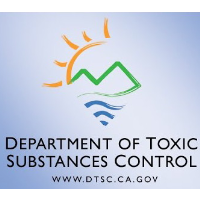State Toxic Substances Watchdog Gets a Watchdog

The mission of the Department of Toxic Substances Control (DTSC) is “to protect California's people and environment from harmful effects of toxic substances,” and to that end has embarked upon a program it calls, “Fixing the Foundation (pdf).”
It’s usually not a good thing when your foundation needs to be fixed, especially if problems have been evident for years and people are already being harmed. The state budget signed by Governor Jerry Brown last week took a stab at answering public demands for reform by funding an oversight panel to report on how the department is doing.
When DTSC launched “Fixing the Foundation” in early 2012, it was sufficiently aware of the low esteem with which it was held that the department subtitled the program, “Restoring the Public Trust.”
That didn’t happen.
The nine-point department to-do list—including better toxic cleanups, collections from polluters, permitting and enforcement, administration, communication, budgeting and laboratory work—did not dissuade lawmakers from passing Senate Bill 812 last year to reform the department.
Governor Brown vetoed it (pdf). The bill would have established a community oversight committee, increased transparency and revised the permit process. The governor found the effort laudatory, acknowledging that the department’s permitting program was “an inadequate and unresponsive regulatory program” and had been for decades while overseeing hazardous waste sites and toxic cleanups.
But he preferred to let the department proceed with its own plan for internal reform.
Over the ensuing year, lawmakers and the governor negotiated what to do about DTSC. The Legislative Analyst’s Office (LAO) reviewed the divide (pdf) between them in a June 5 report that hunted for compromise. The governor’s May revision had proposed an additional $6.6 million for 46 positions, which the Senate rejected.
Lawmakers proposed they slash the DTSC budget in half unless the department provides them with information they want on permits and Exide Technologies. And they wanted an independent review panel with members appointed by the governor, the Assembly Speaker and the Senate Rules Committee.
The budget mostly followed the LAO’s advice: Start the panel, pay for the new positions and drop the threat to defund the department.
The budget also includes money for a new position, Assistant Director for Environmental Justice, to communicate with communities in toxic environments. Ana Mascareñas, who was hired last month, can expect a lot of calls from Exide neighbors and fans of the Toxies.
Exide closed its giant Vernon battery recycling plant in March after decades of complaints, millions in fines, lots of bad testing results and environmental lawsuits. The plant operated with a temporary permit for 30 years, taking advantage of a system that the DTSC admits (pdf) is regarded with “significant dissatisfaction.”
Neighbors of the plant complained for years about being sickened by its lead and arsenic, and the company was regularly in trouble with regulators. But Exide kept on polluting until a South Coast Air Quality Management District (AQMD) report in 2013 said 110,000 people were at higher risk of cancer because of the plant's arsenic emissions.
Exide was about a month from exiting Chapter 11 bankruptcy, and perhaps weeks away from re-opening the plant, when the deal was made with the U.S. Attorneys Office to close the plant, and pay $50 million for teardown and cleanup.
The review panel’s first report is due in January.
–Ken Broder
To Learn More:
Outside Panel Will Oversee California's Troubled Toxic Waste Regulator (by Tony Barboza, Los Angeles Times)
State Auditor Joins Criticism of Moribund Toxic Control Agency (by Ken Broder, AllGov California)
Overview of Conference Issues (Legislative Analyst’s Office) (pdf)
- Top Stories
- Controversies
- Where is the Money Going?
- California and the Nation
- Appointments and Resignations
- Unusual News
- Latest News
- California Forbids U.S. Immigration Agents from Pretending to be Police
- California Lawmakers Urged to Strip “Self-Dealing” Tax Board of Its Duties
- Big Oil’s Grip on California
- Santa Cruz Police See Homeland Security Betrayal in Use of Gang Roundup as Cover for Immigration Raid
- Oil Companies Face Deadline to Stop Polluting California Groundwater





